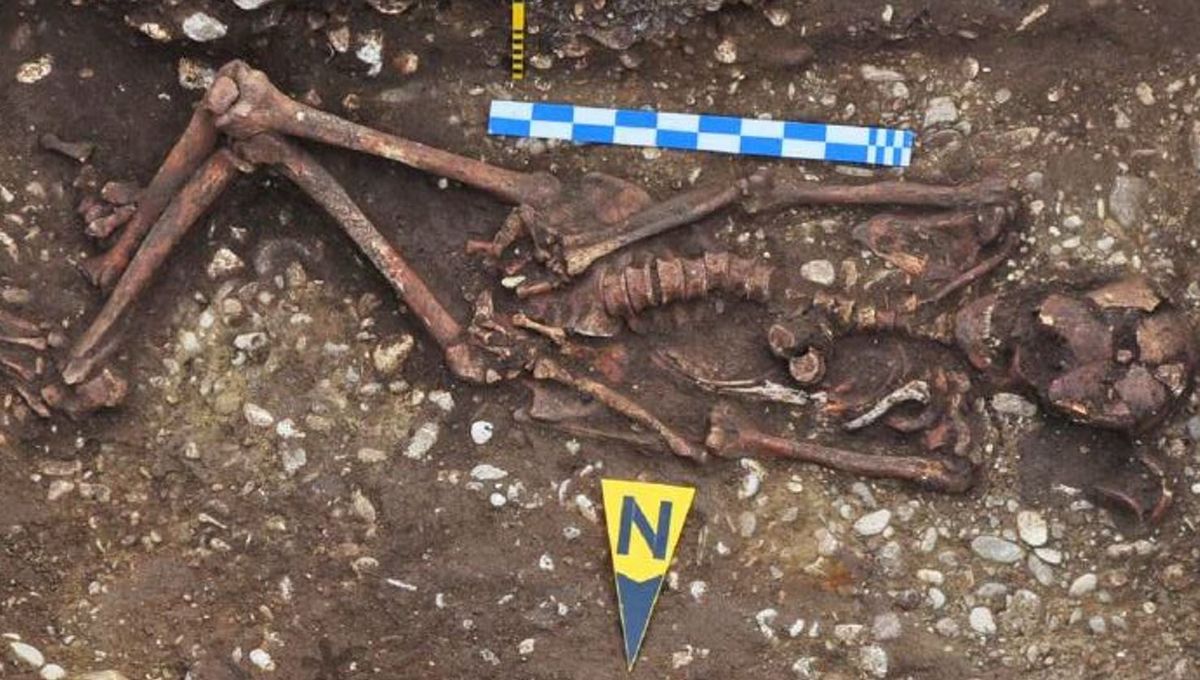
The first people to master the art of horseback riding may have lived in eastern Europe around 5,000 years ago. After examining the remains of hundreds of individuals from the ancient Yamnaya culture, researchers identified signs of skeletal stress caused by equestrian activity in around 15 percent of samples.
Exactly when humans first took to horseback is something that has puzzled archaeologists and anthropologists for some time. Studies have indicated that the animals were first domesticated for their milk and meat around 5,500 years ago, while the earliest evidence for horse-drawn chariots is about 4,000 years old.
However, riding equipment like reins or saddles are lacking from the archaeological records, as are well-preserved skeletons belonging to domesticated horses. In the absence of ancient steeds, the study authors decided to go in search of the riders instead.
The researchers focused their efforts on the Yamnaya, who first appeared on Pontic-Caspian steppes around 5,000 years and soon expanded their range over an enormous area that stretched from Hungary to China. The success of these ancient pastoralists was largely thanks to their innovative use of wagons, which allowed them to manage enormous herds of livestock, although it’s thought that they later took up horse riding as well.
“Horseback-riding seems to have evolved not long after the presumed domestication of horses in the western Eurasian steppes during the fourth millennium BCE. It was already rather common in members of the Yamnaya culture between 3000 and 2500 BCE”, said study author Volker Heyd in a statement.
During their examination of 156 Yamnaya skeletons, the team searched for indications of “horsemanship syndrome”, a collection of six physical symptoms associated with regular riding. Among these indicators are alterations to the shape of the hip sockets, vertebral degeneration caused by repeated impact, skeletal trauma resulting from falls, and changes to the pelvis and thigh bones.
Overall, 24 skeletons – representing 15.4 percent of the total number – showed signs of horsemanship syndrome. Of these, nine displayed at least four of the six traits and were therefore classified as “highly probable riders”.
“The rather high prevalence of these traits in the skeleton record, especially with respect to the overall limited completeness, show that these people were horse riding regularly”, said study author Martin Trautmann.
One skeleton from a burial mound in Strejnicu, Romania, showed all six symptoms, while four others presented five of the traits linked to horse riding. The majority of these individuals lived between 4,500 and 5,000 years ago – although one specimen predated the emergence of the Yamnaya, indicating that the use of horses for transportation may have begun even earlier.
“A grave dated about 4300 BCE at Csongrad-Kettöshalom in Hungary, long suspected from its pose and artifacts to have been an immigrant from the steppes, surprisingly showed four of the six riding pathologies, possibly indicating riding a millennium earlier than Yamnaya,” said study author David Anthony.
Based on their physical symptoms, it’s likely that these ancient riders adopted a highly demanding bareback position known as “chair seat”, which requires the application of continual pressure from the legs to cling to the horse’s back. Additionally, the authors say that “because of the lack of specialized gear and a comparably short breeding and training history, early horses were probably hard to handle.”
For instance, ancient steeds were likely to be more anxious than modern horses, making them more prone to bolting when startled by loud noises or violent events. “The military benefit of equestrianism may therefore have been limited,” write the study authors.
Despite this, they say that “riding certainly was useful for patrolling wide tracts of land and controlling larger herds of livestock. It consequently would have contributed substantially to the overall success of pastoral Yamnaya society.”
The study is published in the journal Science Advances.
Source Link: 5,000-Year-Old Skeletons Show Earliest Evidence Of Horseback Riding